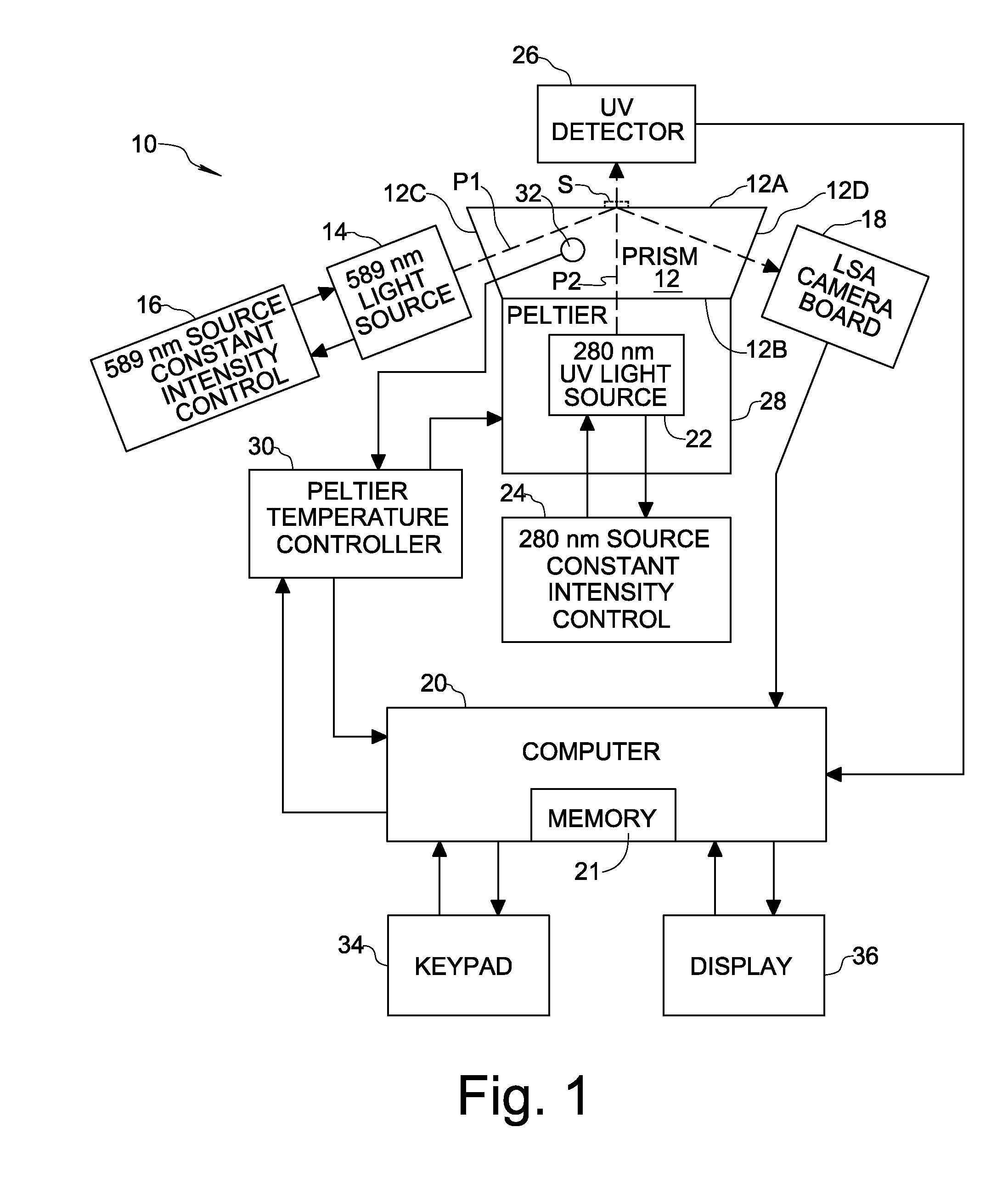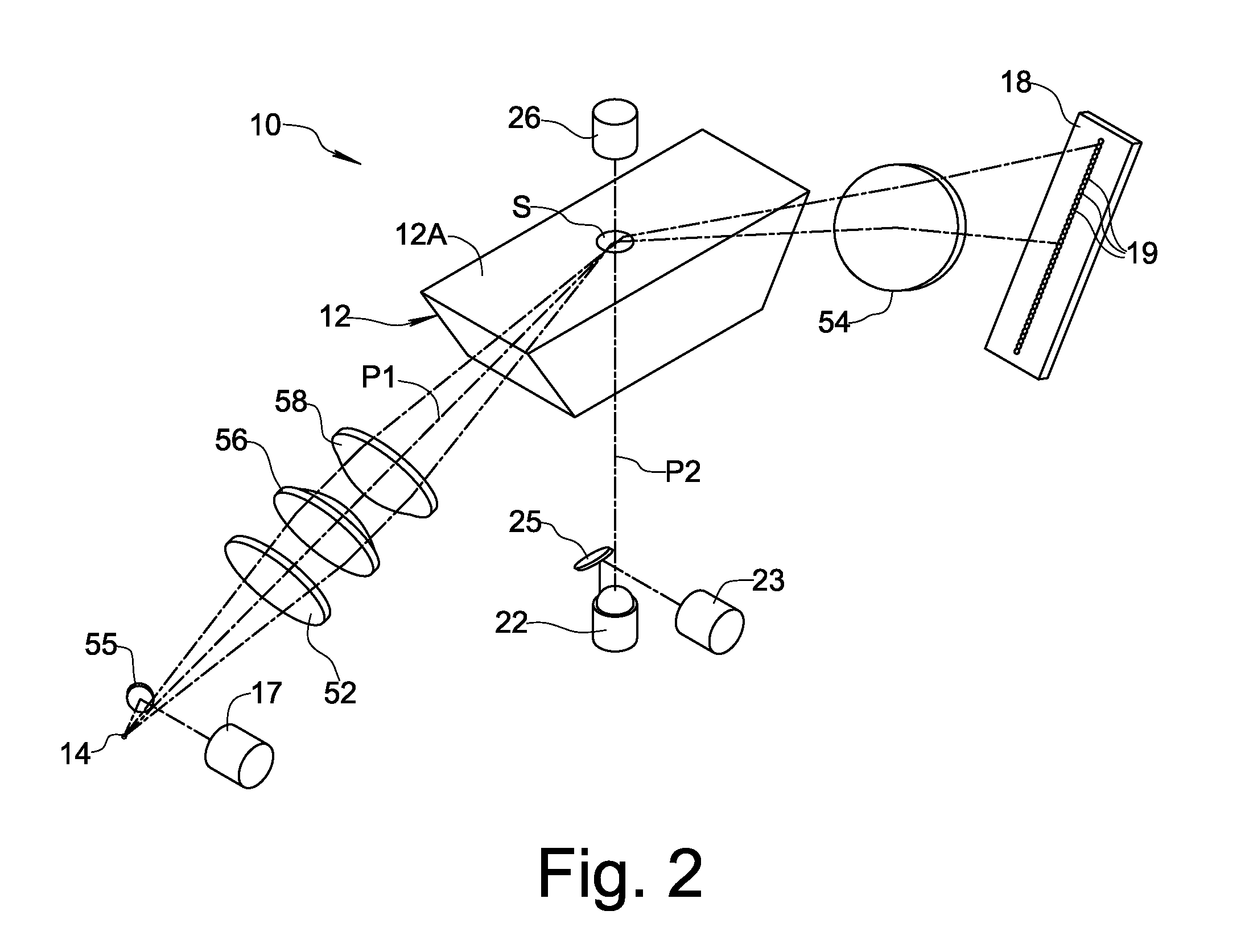Apparatus and method for determination of tear osmolarity
a technology of eye osmolarity and apparatus, which is applied in the field of apparatus and methods for diagnosing dry eye, can solve the problems of poor repeatability of objective slit lamp tests, poor repeatability of common tests for dry eye, and insufficiently complex more complex technologies, etc., and achieves reduced effect on tear osmolarity, reduced molarity, and reduced molarity
- Summary
- Abstract
- Description
- Claims
- Application Information
AI Technical Summary
Benefits of technology
Problems solved by technology
Method used
Image
Examples
Embodiment Construction
[0032]FIGS. 1 and 2 schematically show an apparatus 10 formed in accordance with an embodiment of the present invention. Apparatus 10 operates to measure osmolarity of a tear fluid sample S as an indicator of dry eye. The volume of tear fluid sample S may be on the order of 250 nanoliters.
[0033]Apparatus 10 comprises an optical prism 12 having a top surface 12A on which tear sample S is placed for analysis. Prism 12 is preferably a high refractive-index prism and is shared by a spectrophotometer system (also referred to herein as an “absorbance detection system”) and a refractometer system of apparatus 10, each system being described in detail below. For example, prism 12 may be a sapphire prism having a refractive index of about 1.76. Prism 12 may be a trapezoidal prism having parallel top and bottom surfaces 12A, 12B and nonparallel side surfaces 12C, 12D.
[0034]Reference is also made now to FIGS. 3-5. The spectrophotometer system of apparatus 10 is configured to measure light abso...
PUM
 Login to View More
Login to View More Abstract
Description
Claims
Application Information
 Login to View More
Login to View More - R&D
- Intellectual Property
- Life Sciences
- Materials
- Tech Scout
- Unparalleled Data Quality
- Higher Quality Content
- 60% Fewer Hallucinations
Browse by: Latest US Patents, China's latest patents, Technical Efficacy Thesaurus, Application Domain, Technology Topic, Popular Technical Reports.
© 2025 PatSnap. All rights reserved.Legal|Privacy policy|Modern Slavery Act Transparency Statement|Sitemap|About US| Contact US: help@patsnap.com



